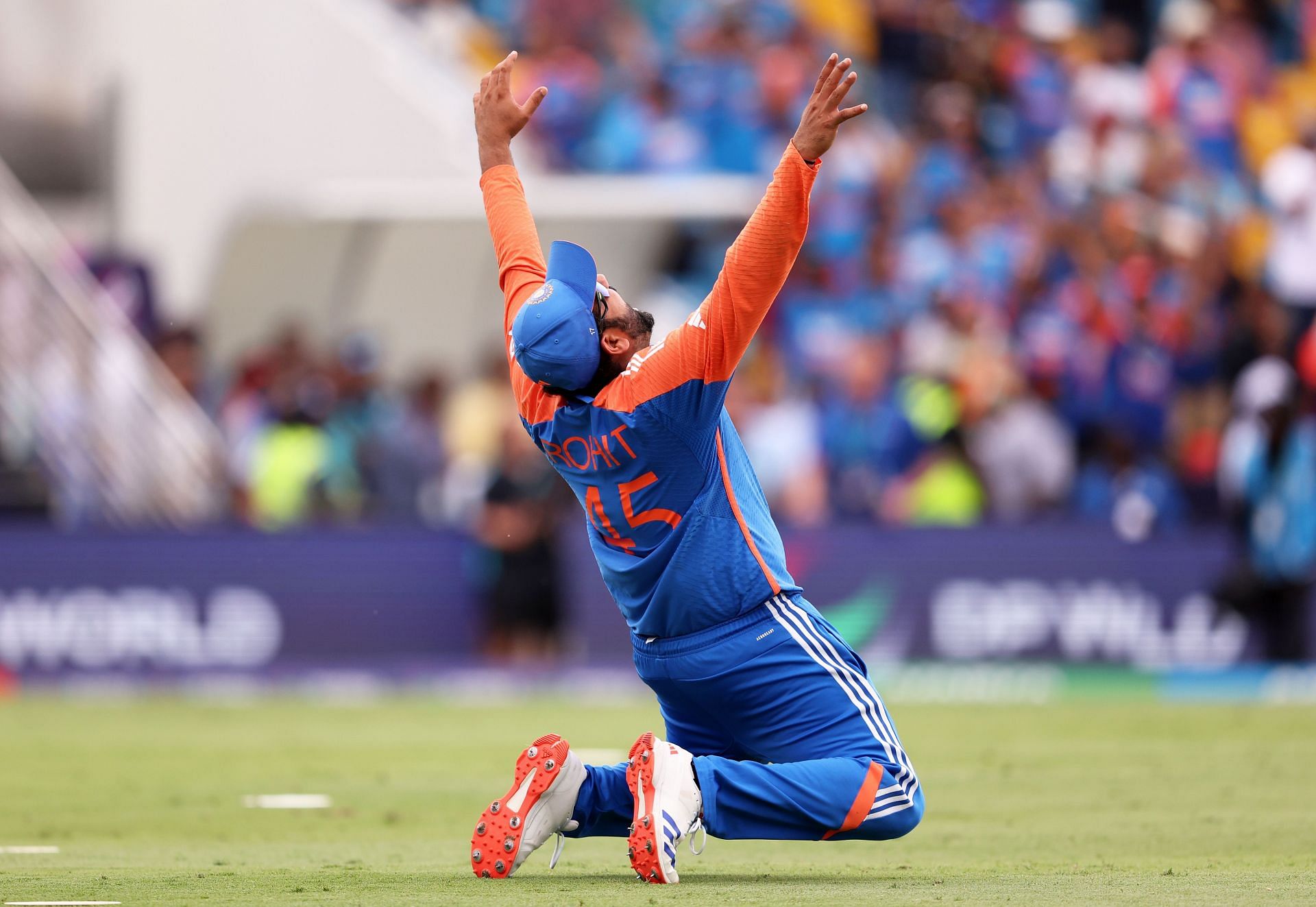
From Ahmedabad horror to Barbados glory: Rohit Sharma writes a dream end to his destiny
As Anrich Nortje drilled a delivery from Hardik Pandya towards deep mid-wicket, Indian captain Rohit Sharma was on his knees with a roar that had as much emotion in it as it had relief. For a few seconds, Rohit lay on the ground with his back facing the sky and hit his hand on the turf multiple times, letting it all out as some of the players and the coaching staff picked him up.
After celebrating in the team huddle near the non-striker's end, Rohit walked towards the square region and took a moment to let it all sink in. One could spot a tear in his eye as he looked up at the heaven, probably thanking the Almighty for giving him another chance.
Once his emotions seemed to be in his control, like a true leader, Rohit Sharma waved at his teammates to come and shake hands with the opposition. The game he loves and respects so much finally gave him what it had snatched from him on that ill-fated night in Ahmedabad. This was Rohit's redemption.
Rohit Sharma chose to stay when it was easier to quit
It is well-documented how the idea of being more aggressive first crossed Rohit Sharma's mind when India were handed an absolute hammering by England in the T20 World Cup 2022 semifinal. At the age of 35, Rohit had to make a conscious decision to change his approach, something that had fetched him a lot of big scores for more than a decade.
However, keeping his personal milestones aside, Rohit Sharma embraced the idea of playing an ultra-aggressive brand of cricket and made it possible on the biggest of stages, in the 2023 World Cup. In the whole tournament, Rohit scored a staggering 597 runs at a mind-blowing strike rate of 125.94 with one hundred and three half-centuries.
The hallmark of Rohit's World Cup was that he was still able to continue playing fearlessly in the knockout stages against New Zealand and Australia, scoring a quickfire 47 in both games. Unfortunately, fate didn't have it for him as he had to be content with a runners-up medal.
Despite the disappointment of the World Cup final defeat, there was a sense of appreciation for the way Rohit went about his cricket and stayed true to his brand of ultra-aggressive batting. There also was a bit of sympathy among the fans, understanding that at the end of the day, the Indian captain gave his everything.
Probably the easiest thing from the November 19 defeat could have been to get disheartened and call it quits from white-ball cricket. However, 20 days after the final, Rohit opened up on his emotions and pledged to keep going for 'another ultimate prize'.
Rohit Sharma walked the talk in a format he was written off in
When Rohit Sharma was named as the captain of the Indian T20I team for the series against Afghanistan, it garnered mixed reactions from fans. Many termed it as a backward step given the fact that they had a new captain in Hardik Pandya and several fresh faces in the T20 setup.
Naturally, Rohit's last T20I knock had come under the spotlight as his 28-ball 27 against England in the semifinal in Adelaide had made many believe that it would be his last innings in India's T20I jersey.
The love and admiration after the incredible World Cup campaign gradually seemed to turn a bit into frustration for fans. Many felt he couldn't replicate his ODI heroics in T20Is, and they had good reasoning to believe it too. However, it all changed decisively after the carnage by Rohit of Mitchell Starc in St Lucia.
After smashing two sixes over the covers, Rohit opened up his stance in a way to access the leg side so that he could smash another four and a six with the breeze. Soon another six followed and those 28 runs began a juggernaut that even the most optimistic fans of Rohit may not have expected.
Rohit Sharma was batting like a man possessed as he plundered the high-quality Australian bowling attack. If his 92 off 41 against the Aussies was magnificent, his 57 of 38 in the semifinal against England was arguably even better as it came on a tricky pitch.
The low bounce in Guyana coupled with India losing two early wickets made it absolutely crucial for Rohit to form a partnership with Suryakumar Yadav and rescue the innings. Unlike Adelaide 2022, this was a knock where Rohit did not go in a shell as he continued to pick his moments and throw punches at the opposition.
By the time India made it to the final, Rohit seemed to be a shadow of the batter who had shown signs of struggle in the T20 format of late. While he couldn't contribute big in the final, his 257 runs at a strike rate of 156.70 reinforced the saying form is temporary, class is permanent.
It is not easy to change your game all of a sudden when you're at the fag end of your career. However, Rohit Sharma was motivated to adapt to the demands of the modern game and was rewarded handsomely on an individual level in two ICC tournaments.
The broken dream in Ahmedabad was resurrected in Barbados. The way India snatched victory against South Africa from the jaws of defeat, it was almost as if Rohit snatched the pen from destiny and said, "This is not how it will end. This is not how I will bow out."
The young boy who had played his first T20I innings against South Africa in the 2007 T20 World Cup knew that life has come to a full circle 17 years later. The poetry that is Rohit Sharma's batting had gotten the poetic justice it deserved.